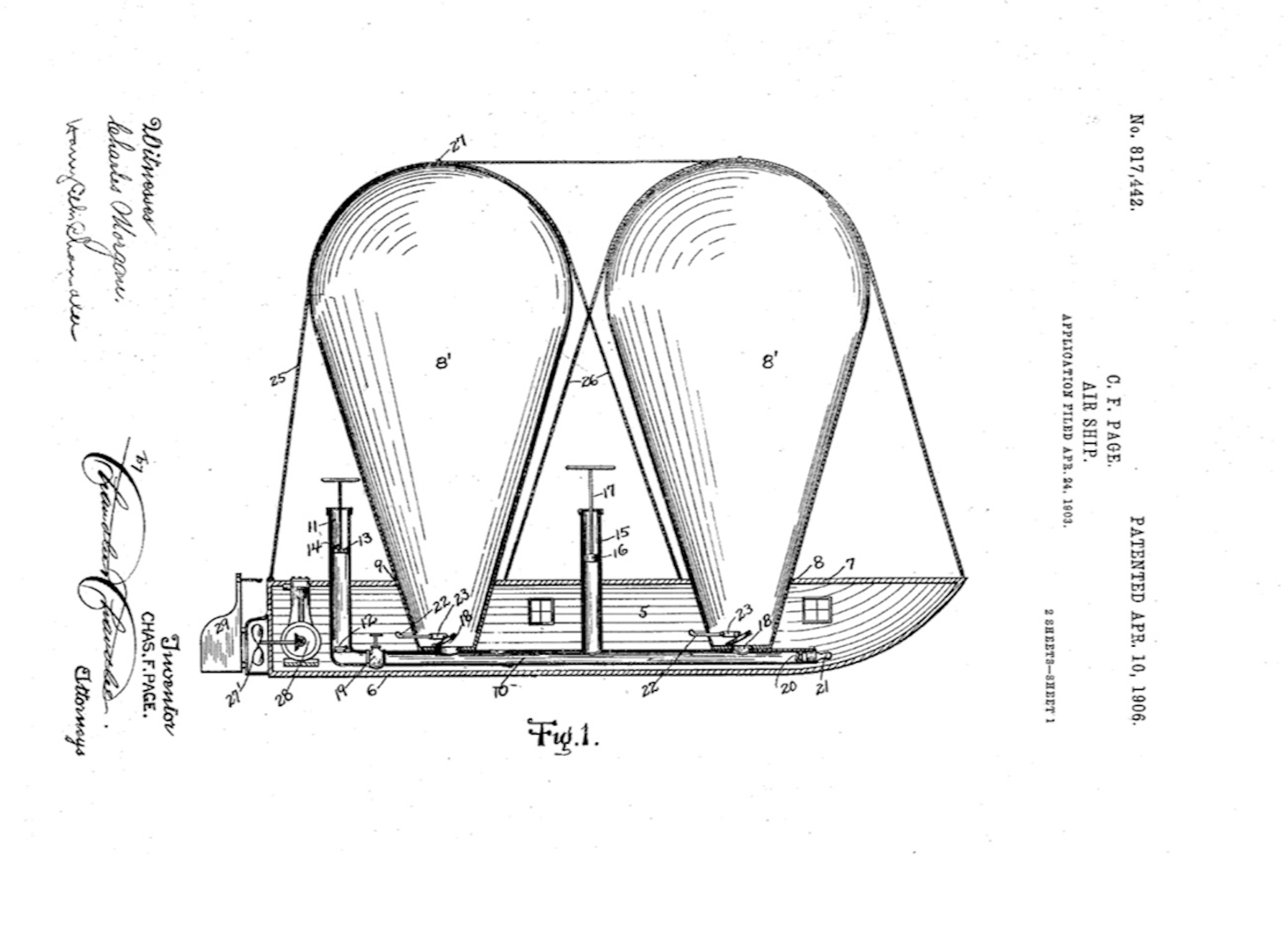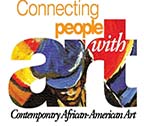The story of Orville and Wilbur Wright and their first airplane flight at Kitty Hawk, North Carolina in 1903 is known to millions around the world. What is not known is that they had a rival in African American inventor Charles Frederick Page. See Page’s remarkable story, written by historian Kelly McCoy here.
Charles Frederick Page of Pineville, Louisiana, was an inventor who designed, built, and applied for a United States patent for a flyable airship in 1903. This event occurred before Orville and Wilbur Wright flew the first powered and controlled aircraft near Kitty Hawk, North Carolina, on December 17 of the same year. Likely born enslaved in Rapides Parish, Louisiana in 1864, Page educated himself and became known for his deep thinking and entrepreneurial spirit.
Page was skilled in a variety of occupations, although he was primarily known as a timberman. He also produced and sold charcoal and was a botanical farmer who sold plants to drug companies to make medicines.
Between 1899 and 1903, at his home in Pineville, Page built a full-scale version of a bi-ballooned flyable airship. On April 24, 1903, he filed a patent application with the United States Patent Office. In 1904, while his patent application was pending, Page sent his creation to be exhibited at the 1904 Louisiana Purchase World’s Fair in St. Louis, Missouri. While it is not clear why he wanted to exhibit his invention at the Fair or why he wanted it shipped rather than deliver it in person, speculation years later from grandson Joseph P. Page suggested that shipping it was the custom of the era. Since it was shipped on a freight train, there was no room for Page as a passenger.
Page may have been inspired to compete in the international aeronautic competition held at the fair because of the offered grand prize of $100,000, a considerable sum during that era. The airship, however, mysteriously disappeared enroute to St. Louis. Eva Page, the inventor’s daughter, who suspected racism during this Jim Crow era was quoted in a 1974 interview in Alexandria Daily Town Talk, a local newspaper as saying “It was stolen… After that Papa never built another one.”
Despite this setback, Page received United States Patent #817,422 for his “Air Ship” on April 10, 1906, before the Wright Brothers received U.S. Patent #821,393 for their “Flying Machine” on May 22 of the same year. Page received inquiries and offers to buy his patent but he refused. He was so discouraged after the airship disappeared that he basically gave up any further attempts at constructing an air ship.
Page moved past the loss of his invention and devoted his life to helping his community individually and collectively in many ways during the Jim Crow era. In one instance he developed ways for local tenant farmers to diversify crops and infrastructure that would allow them to eventually own their farms over time. In another instance he created a group of mediators that helped to prevent a race riot after the murder of a local white student. Page also established a brickyard for the Black community members to use, built coffins and practiced amateur dentistry for people who could not afford these services. Seeing a need for a proper cemetery for Black community members in Pineville, he founded the Lincoln Memorial Cemetery.
Charles Frederick Page died at his son’s home in Alexandria, Louisiana on November 18, 1937, and was buried in the Page family crypt at the Lincoln Memorial Cemetery. Regarding her father’s legacy, daughter Eva Page said in her 1974 interview in the Alexandria Daily Town Talk, “He always thought people were more important than airships.”
In recent years, Charles Frederick Page’s achievements have been remembered and reclaimed locally and nationally through the efforts of his grandchildren, Joseph P. Page and Orris V. Cooper Jr., as well as historian and author Michael D. Wynne. In 2024, Page posthumously received recognition for his achievements and contributions to aviation and the community with a commemoration and historical marker in the city of Pineville, Louisiana. An exhibition with replicas of Page’s patented drawings created by artist Peter Excho was installed at Louis Armstrong International Airport in New Orleans and at the New Orleans Ernest N. Morial Convention Center.
Do you find this information helpful? A small donation would help us keep this available to all. Forego a bottle of soda and donate its cost to us for the information you just learned, and feel good about helping to make it available to everyone.
BlackPast.org is a 501(c)(3) non-profit and our EIN is 26-1625373. Your donation is fully tax-deductible.
Michael D. Wynne, Charles Frederick Page and Paul Leo Ortego: Heroes In The Birth of Aviation in American (Alexandria, Louisiana: American History Foundation Publications, 2020); United States Patent and Trademark Office US-0817442-A : No. 817,442. Patented April 10, 1906 C.F. Page Application Filed Apr. 24,1903; “Patents and Postal Matters,” The New Orleans Times-Democrat, Wednesday, Apr 11, 1906, page 3, https://www.newspapers.com/article/the-times-democrat-patents-and-postal-ma/164001017/; “Pineville Colored Man Has Invented Air Ship,” The Weekly Town Talk, Alexandria, Louisiana, Saturday, April 21, 1906, p. 2, https://www.newspapers.com/article/weekly-town-talk-pineville-colore-man-ha/164002405/; “Loss of Flying Machine Dashed Possibility of Fame,” Alexandria Daily Town Talk, Alexandria/Pineville, Sunday May 12, 1974, https://www.newspapers.com/article/the-town-talk-loss-of-flying-machine-das/164003005/; “Pioneer Skies: From Freedom To Flight, The History of Charles F. Page Opening At Louis Armstrong New Orleans International Airport,” Louisiana Office of the Lieutenant Governor, Louisiana Department of Culture, Recreation, and Tourism, July 1, 2024, https://www.crt.state.la.us/news?NewsID=769; Robin Miller, “Black inventor Charles Frederick Page created airship in Louisiana before the Wright Brothers” The Advocate, August 18, 2024; https://www.theadvocate.com/curious_louisiana/black-pineville-inventors-airship-predated-wright-brothers/article_9cd8ff3a-3ee4-11ef-9c38-07b3fc92053d.html.

